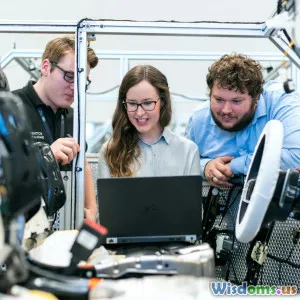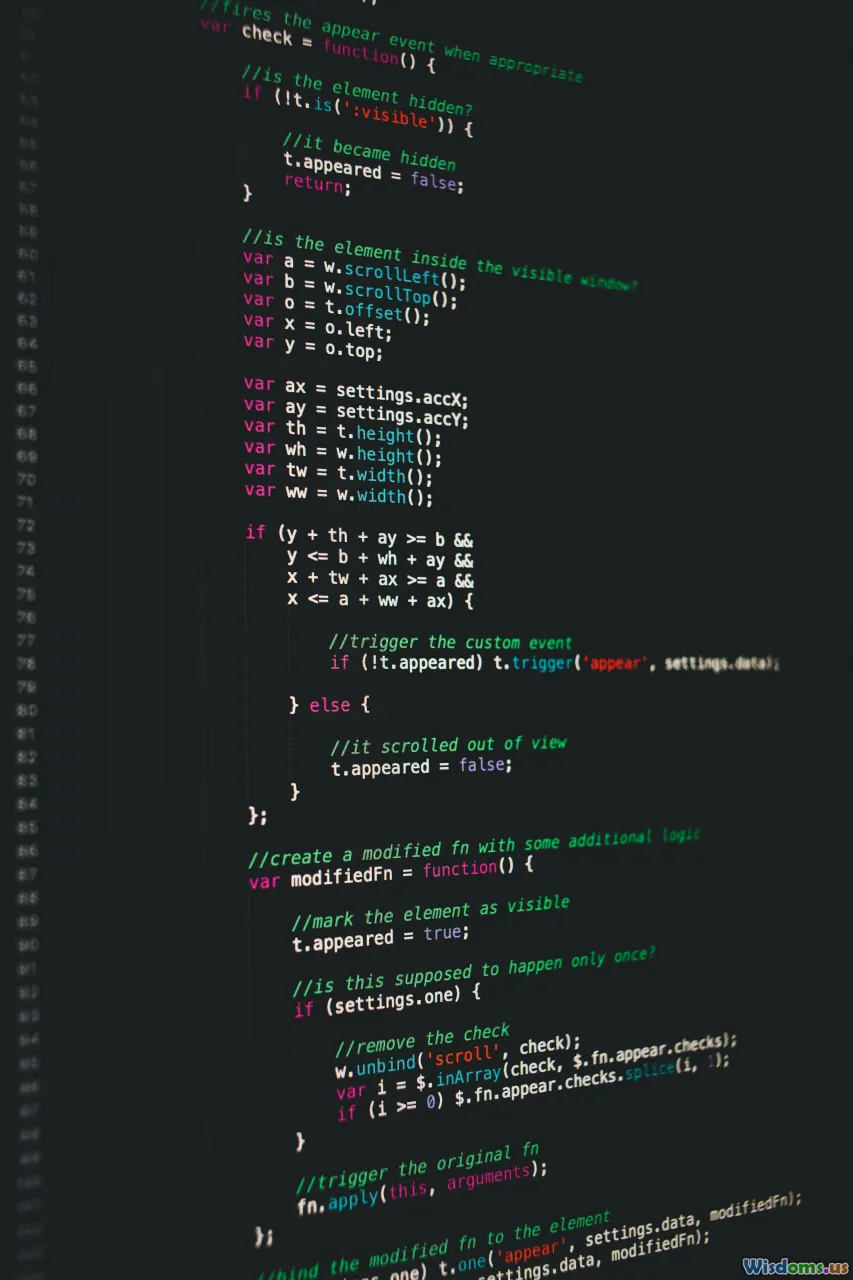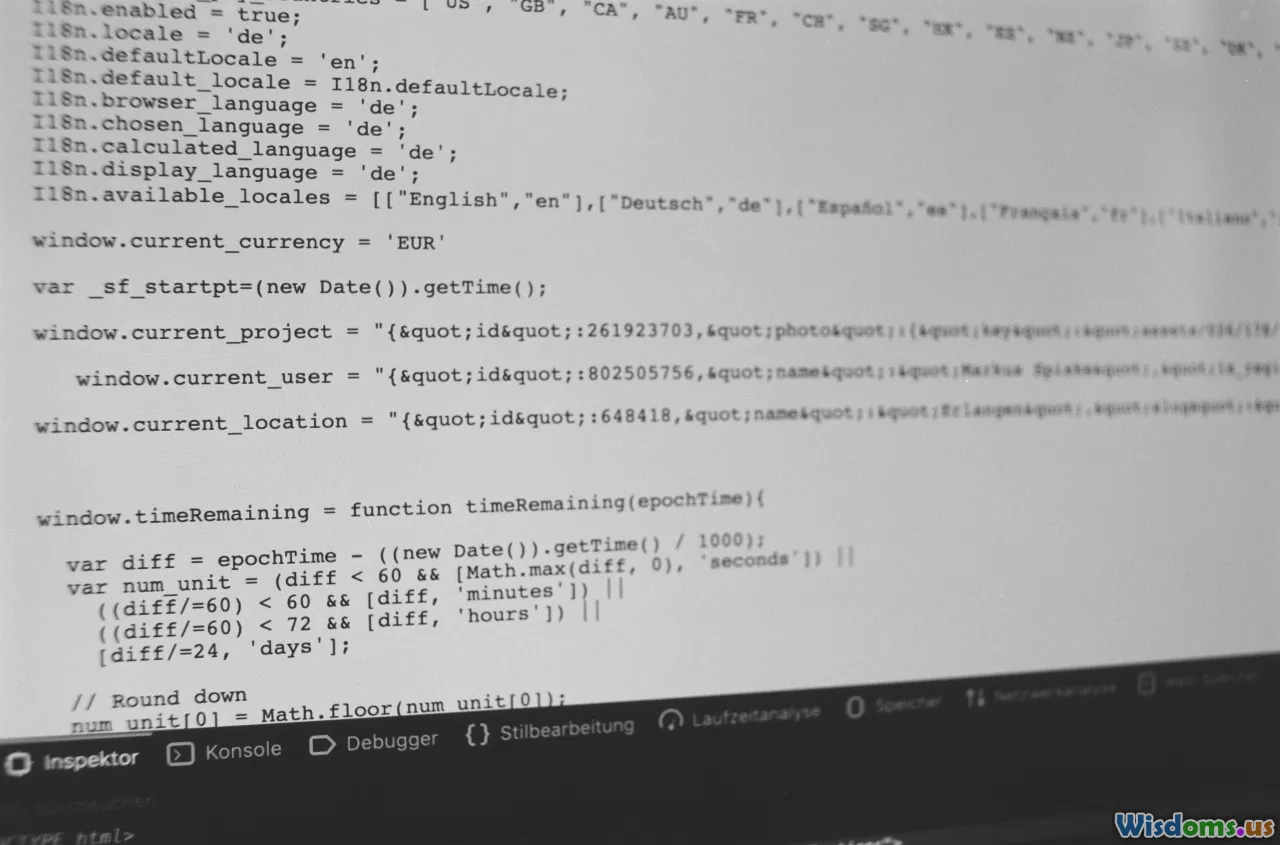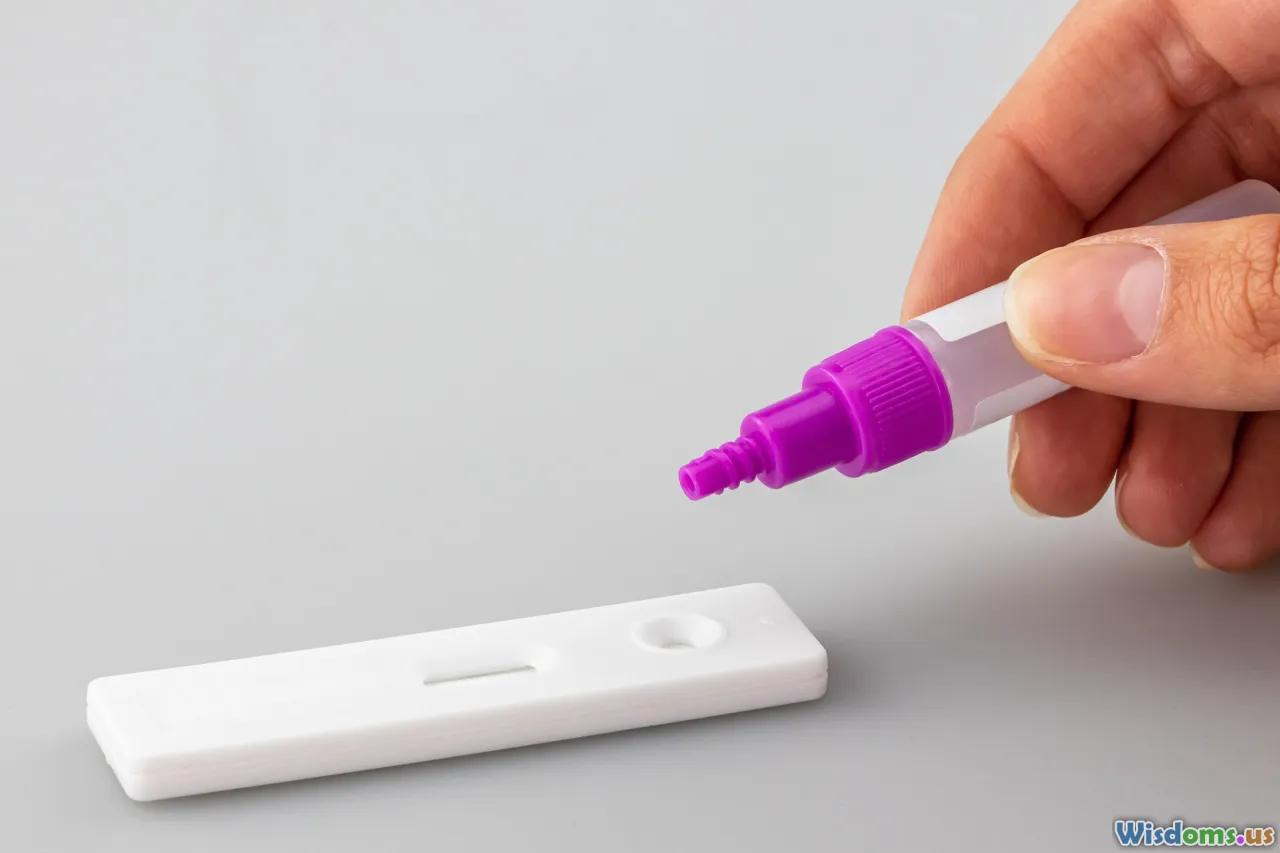
I Tried Writing Zero Manual Tests and Failed
17 min read A candid review of attempting software development with zero manual testing and lessons learned from the failures. (0 Reviews)
I Tried Writing Zero Manual Tests and Failed: What I Learned About Quality Assurance
Modern software development is buzzing with promises of efficiency, speed, and reliability—terms often intertwined with automated testing. The allure is undeniable: what if we could eliminate manual testing entirely and rely solely on our code, pipelines, and a well-curated suite of automated tests? Determined to test this in reality, I embarked on a project determined to write zero manual tests. The journey started with optimism and ended with some hard-learned lessons.
The Appeal of an All-Automation Approach

Images of streamlined workflows and ‘green ticks’ on continuous integration (CI) dashboards have made automation synonymous with modern QA practices. There are compelling arguments for moving towards fully automated QA processes—reduced costs over time, swift feedback, elimination of repetitive manual labor, and the promise of catching regressions before they sneak into production. Teams tout stories of releasing every day, of scaling faster than competitors hampered by expensive, slow manual checks.
Take, for example, best-in-class tech organizations like Google or Netflix. Their pipeline is built around heavy automation. Anecdotes surface about entire releases being staged and shipped without a manual finger lifted. The mythos has solid footing—after all, continuous testing and integration theoretically catch errors at their source, preventing costly defects from making their way forward.
Excited and bolstered by these stories, I set strict ground rules: No manual test cases, no explicit exploratory QA by hand—only robust, code-based automation. All exploratory testing or user-driven churn had to come from other team roles in the normal course of using staging builds or, worst case, production.
The first weeks of this all-automation philosophy felt liberating: challenges could be solved with clever engineering rather than laborious repetition. But soon, cracks began to show.
The First Hurdle: Coverage Blind Spots

At the heart of automated testing is coverage—usually measured via statements, branches, or functions exercised during test runs. However, despite our controller’s metrics pridefully reporting ‘95% code coverage,’ the nightmare incidents started piling up. What shocked me was that production bugs, reported by real users, stemmed from scenarios that no amount of unit or integration tests had envisioned.
For instance, one user discovered a simple, but show-stopping, edge case: a corrupted config file caused our graceful fallback mechanism to behave unpredictably, triggering a partial crash that left the UI half-functional. The pipeline’s continual code-based verification didn’t catch it because our test data always used pristine, abstracted fixtures, never corrupted or partially deleted files.
Worse still, there were cases where UI behavior broke on certain mobile browsers, even though our automated Selenium suite proudly green-lit every deploy. As it turned out, the Selenium farm did not account for all combinations of mobile browsers and OS versions real customers used.
These gaps represented a fatal blind spot intrinsic to automation: tests only validate what they've been explicitly written to check. Anything unanticipated will simply be missed. Coverage numbers became a dangerously false sense of security—they illuminated the code paths we thought to test, hiding the many others we didn’t even consider.
The Irreplaceable Value of (Occasional) Human Intuition

At this stage, I came to a humbling realization: automated tests are literal, logical, and mercilessly bounded by their definitions. But real users—inevitably mistake-prone, delightfully creative, or simply unfortunate—will always find interactions most automation suites cannot imagine.
Take, for example, the scenario where a user tries to input emojis into every form field, or intentionally pastes in 5000 characters to see if the character count matches. I once watched a manual QA engineer attempt to upload a gigabyte-sized, incorrectly named spreadsheet into our reporting tool—something we’d never anticipated. It caused a silent server memory leak, degrading performance for all customers. No automation would have thought to try these outlandish edge cases without a developer having pre-defined and scripted them.
Moreover, human testers spot issues without discretion toward the boundaries an automated test script sets. A good QA person explores features with empathy—considering how a novice, visually-impaired, or even malicious user might experience the interface. Automation doesn't get bored, distracted, or curious; human minds excel precisely by being able to 'wander off script' and see the product through new, breakable eyes.
The Illusion of "Perfect Automation"

Brushing up against the above limitations illustrated a further, uncomfortable truth: there’s no such thing as ‘perfect automation.’ The allure of 100% test automation lies in its promise that, when done right, you achieve full confidence with every green build badge. This is seductive and, unfortunately, inherently flawed.
The best automation suites are built iteratively, guided by experience and, crucially, by learning from real bugs that occur in the field. Many SRE (Site Reliability Engineering) best practices explicitly recommend using real incidents to drive new automation coverage—or as Google puts it, "You can’t test quality in; you have to build it and observe it repeatedly."
Furthermore, every automated test adds overhead: maintenance, debugging flaky behavior, and adapting as code evolves. In fast-moving projects, I quickly found myself firefighting brittle tests breaking on benign UI updates or environment changes. Spending hours diagnosing random CI failures robbed us of hours better spent improving the application itself or, ironically, actually testing it in novel ways.
Despite the industry mythos, real-world automation is always a moving target. Tools, frameworks, infrastructure change. Business requirements are adjusted or reversed. The ideal of having a self-sustaining constellation of tests catching every issue, on every deploy, simply isn't attainable—too many surprises creep in at the boundaries.
Where Automation Actually Shines

For all its shortcomings, automation is transformative when harnessed properly. The best application isn't "replace all manual tests," but rather "automate what should always work reliably, rapidly, and repeatedly."
Automated tests thrive at regression checks—guardrails that stop old code from breaking as features evolve. Integration tests simulating API calls, form submissions, permissions validation, or workflow scenarios mean developers can refactor with more confidence. The speed of feedback enabled by continuous integration is invaluable for a team pressing to ship frequently.
Here's a concrete example: we implemented an automated suite ensuring our billing calculations (taxes, discounts, payment failures) matched business requirements. This automation not only caught newly introduced edge cases quickly, but also eliminated hours of repetitive manual verification during sprints. Similarly, automation guaranteed that with each pull request, major workflows—signup, onboarding, file upload—were exercised across all essential code paths.
But there’s a flipside: these tests, robust as they are, cannot easily exercise what wasn’t anticipated. UI nuances, accessibility issues, or unexpected user journeys still flew below the radar.
Why the Cost of Manual Testing Is Often a Bargain

Early in my experiment, I saw team hours and budget consumed by manual QA as a cost to be minimized, perhaps eliminated. In hindsight, this was a critical mistake. Manual QA represents an investment, not a tax—a unique opportunity for proactive risk hunting, creative challenge, and true product empathy.
A manual sprint, often scorned as ‘slowness’ in agile cycles, can preempt major incidents and prevent expensive technical debt down the line. Manual testers develop a sixth sense for ‘trouble zones’—features likely to baffle or frustrate users, and places where assumptions break down. At one point, our QA found that the onboarding page failed if users tried to progress backwards through steps—a behavior automation couldn't catch, since those interactions weren't part of written scripts.
Collaboration between manual testers, product managers, and developers often produces insights no amount of automation would have surfaced: clunky user flows, misleading copy, accessibility barriers, and performance hiccups that would otherwise reach production. The dialogue these roles have around ‘what could possibly go wrong’ is as valuable as any automation suite.
In retrospect, allocating budget for exploratory QA wasn’t just risk mitigation—it was a way to invest in better design, better code, and ultimately, happier users.
The Hybrid Approach: Towards Balance and Pragmatism

Where did things land once the zero-manual pledge broke? With the scars of mishaps behind us, my team pursued a more moderate, effective hybrid model: leverage automation for repeatable, well-defined regressions and free up human testers for high-value exploratory work.
Every new feature was rolled out with:
- Code-based regression testing for core flows: authentication, role-based access, key business logic.
- Scripted acceptance tests to validate stories and bugs as they’re fixed.
- Targeted manual, exploratory sweeps by QA—especially for multi-browser support, accessibility, and usability verification.
When we automated previously manual test cases, QA repurposed their time to mimic actual customer journeys, invent haphazard usage patterns, or stress test APIs with malformed data. Manual testers also regularly met with developers to review automation gaps—what wasn’t tested, why, and how real users might surprise us.
We invested in test planning sessions to ensure new UI flows had both automated scripts and manual priority passes during their first two releases. Early feedback on usability and access sped up bugfixes and improved later automation.
Product quality soared as a result, and so did development team confidence—realizing the most insidious bugs were not the ones automation routinely caught, but those it didn’t anticipate.
Tips: Building a High-Quality Testing Workflow

If you’re wrestling with the allure of "zero manual testing" or expanding your automated test coverage, consider these actionable guidelines drawn from hard experience:
- Automate the obvious and tedious first: Regression paths, repeated workflows, calculations, permissions, and critical integrations.
- Keep automation suites lean and relevant: Monitor and retire tests that no longer serve the product; don’t cling to brittle, redundant cases.
- Engage manual testers as creative explorers: Empower QA to design destructive user journeys—even those that seem illogical.
- Synchronize automation and manual cycles: Use manual to discover what should be automated for the future and to plug gaps.
- Incorporate usability and accessibility sweeps: These are notoriously difficult for scripts to catch but vital for customer experience.
- Track root causes of escapes: Make every surprise in production a candidate for new test coverage, automated or manual.
- Don’t neglect real-environment testing: Simulated environments miss what the outside world can throw at you—flaky connections, corrupted data, device-specific bugs.
- Invest in training and creativity for QA: Human ingenuity is irreplaceable; support testers with time and resources to dig deep.
The Value of Failure: Why My Experiment Was Worthwhile

At the end of my failed journey towards zero manual testing, our team emerged far wiser. The process exposed not only the gaps in our automation but the undervalued brilliance of intentional, human-driven testing. We learned that every shiny metric comes with limitations, and what ultimately keeps users happy isn’t code coverage alone, but holistic care throughout the QA process.
If you’re contemplating eliminating manual QA in your projects, pause. Resist the convenience of extremes. It’s not a waste of time to challenge assumptions—often, the best approach is clarified only by failing first and learning exactly where automation ends and thoughtful manual testing must begin.
Our balanced approach now powers better product quality, reduces risk, and fosters a culture of collaboration and curiosity. That, more than any suite of perfect tests, is what real software quality demands.
Rate the Post
User Reviews
Popular Posts

















